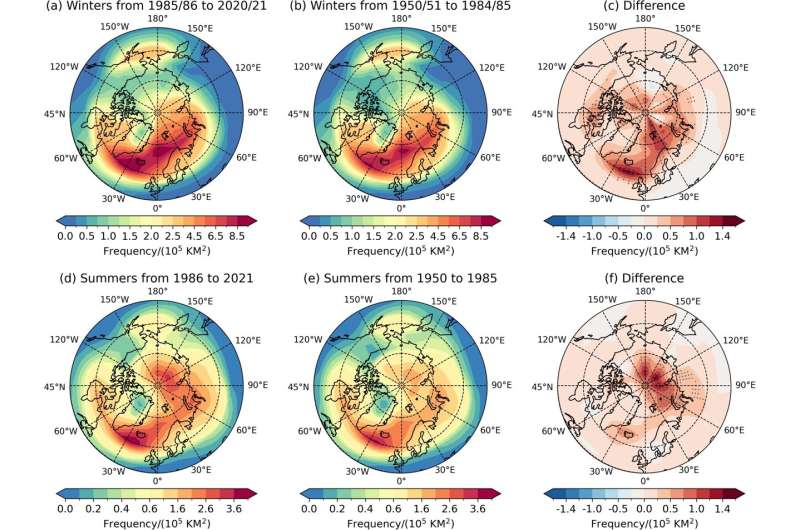October 26, 2023 report
This article has been reviewed according to Science X's editorial process and policies. Editors have highlighted the following attributes while ensuring the content's credibility:
fact-checked
peer-reviewed publication
trusted source
proofread
New study suggests cyclones in the Arctic are forming more often and getting stronger

A team of Earth scientists from North Carolina State University, the University of Alaska Fairbanks, North Carolina A&T State University, and Sandia National Laboratories has found evidence that suggests cyclones have become more common over the past half-century and have also become stronger.
In their paper published in the journal Communications Earth & Environment, the group describes how they gathered resource data from a variety of sites covering decades of environmental research in the Arctic and what they learned about cyclones in the region.
Prior research has shown that temperatures in the Arctic are rising faster than anywhere else on Earth. Such changes have led to ice forming later and melting earlier each year; some scientists have predicted that there may be ice-free summers by the end of this decade. In this new effort, the research team focused their attention on Arctic cyclones. This came on the heels of the strongest known cyclone to ever strike the Arctic region last year. With wind speeds up to 67mph, the storm generated massive waves that broke up a lot of the winter ice.
To find out if such storms are becoming more prevalent, the research group gained access to a large number of data sets that hold climate information about the Arctic, going back to the 1950s. They then made comparisons of cyclones that have occurred over the past seventy years. In so doing, they found that cyclones in the Arctic have been growing bigger and stronger—and they last longer too. They also found that they have been happening more often.
The researchers found what they describe as a clear association between rising temperatures and cyclone formation in the Arctic. They also found that changes in temperature gradients are playing a role in the size and strength of the cyclones that form, and noted that changes in the jet stream are likely linked to the increase in numbers of Arctic cyclones, particularly in the winter. Additionally, vortexes of polar air in the troposphere have been strengthening, leading to more cyclones in the summer.
The team concludes by observing that as more cyclones of larger size strike the Arctic, more sea ice breaks up, speeding up the process of climate change in the region.
More information: Xiangdong Zhang et al, Arctic cyclones have become more intense and longer-lived over the past seven decades, Communications Earth & Environment (2023). DOI: 10.1038/s43247-023-01003-0
Journal information: Communications Earth & Environment
© 2023 Science X Network





















